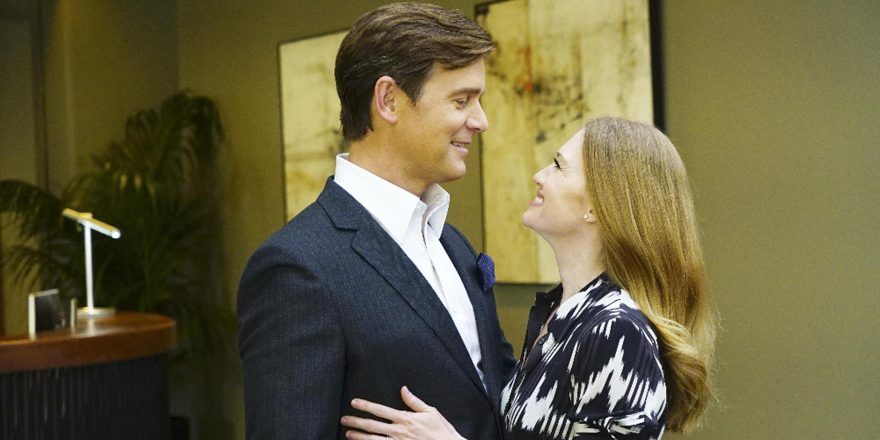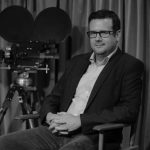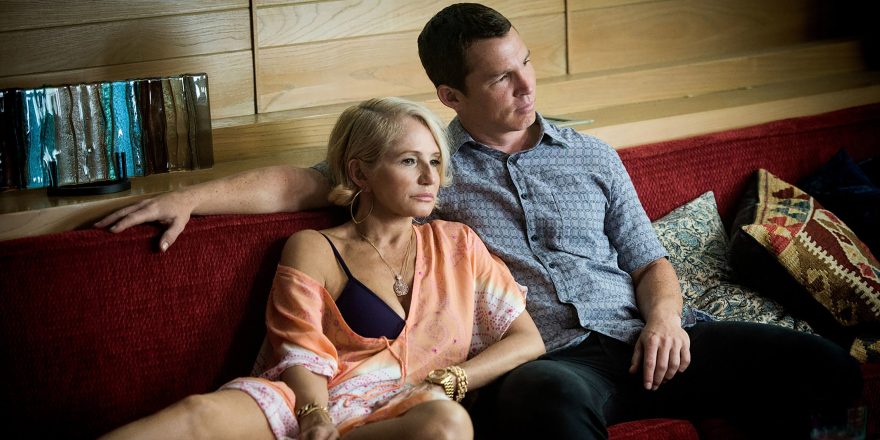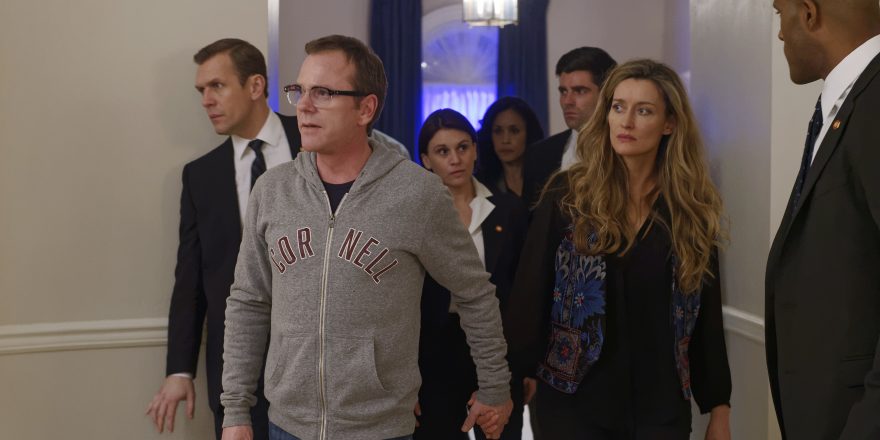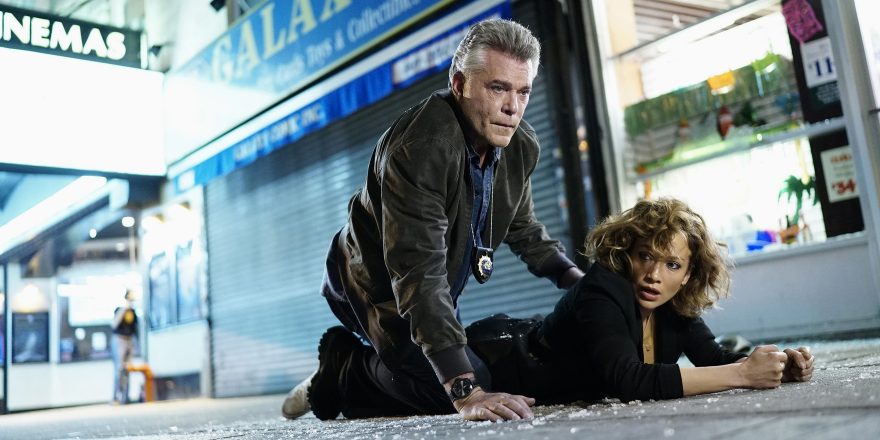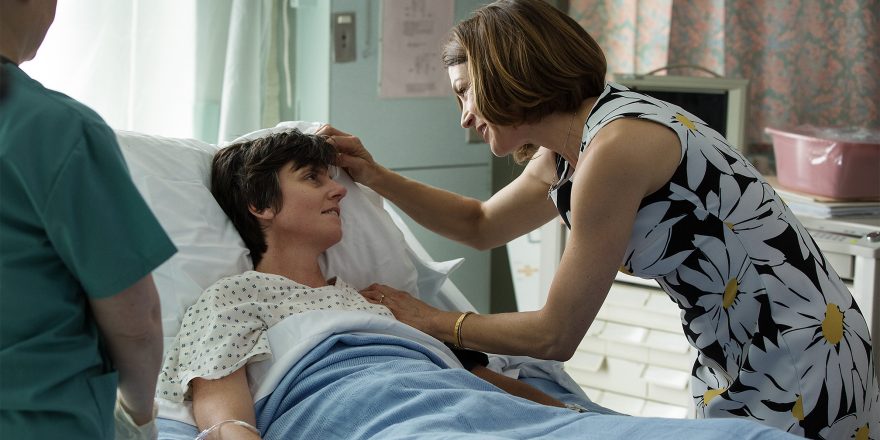Steven Soderbergh has often remarked that his escapist remake of Ocean’s 11 was one of the most laborious productions of his life – it turns out that making something look easy is damn hard work.
I thought a lot about Soderbergh’s claim while catching up with season one of The Catch, a spectacularly pleasurable caper series that recalls some of Soderbergh’s best films – particularly Out of Sight – in its intoxicating blend of witty romance, suspenseful but light-footed plotting, and jazzy aural and visual design that owes more than a little to both versions of The Thomas Crown Affair. The series has received decent reviews and attracted enough of an audience to warrant a second season, but I think it’s considerably underrated – it’s not just good, it’s one of the most entertaining shows in the history of television, and also one of the most supremely well crafted. Yet since that craftsmanship is geared toward something so ostensibly lightweight, The Catch doesn’t get the credit that it should – it’s too successful for its own good when it comes to passing its exquisite artistry off as something breezy and effortless.
The Catch is a difficult show to summarize, especially without spoilers, but the crux is a sexy, funny, and ultimately moving love story between private investigator Alice Vaughan (Mireille Enos) and con man Benjamin Jones (Peter Krause). Alice works for a high-end security firm that, as the series begins, is closing in on Ben and his partners; the “catch” (one of many in the series) is that Alice is already intimate with the man she’s chasing and doesn’t even know it – Ben, who she knows as Christopher, is her fiancé. In the pilot episode, Ben realizes Alice is closing in on him and disappears, breaking her heart and compromising her professionally; in the episodes that follow, the writers spin an increasingly complicated – and increasingly involving – yarn in which Alice and Ben move in and out of each other’s lives, shifting from lovers to enemies to partners to rivals and back again over the course of season one.
There’s a sort of overarching narrative related to Ben’s partners and employers, but each episode also has a relatively self-contained case for Alice’s firm that sometimes (but not always) intersects with the primary storyline. The show contains a dizzying number of subplots made all the more Byzantine by the fact that nearly everyone on the series is involved in some kind of con or lie – everyone’s keeping secrets from each other, and the various stories of investigation and crime overlap with multiple love stories as Alice’s coworkers at the security firm all have romances that seep – sometimes crash – into their work. Yet somehow the convoluted plotting never feels labored or confusing; showrunner Allan Heinberg and his writers nimbly keep all the characters and storylines in perfect equilibrium, bringing them all together in the final episode of season one in a manner that satisfies all of the expectations the show has raised while introducing an almost unbearable level of anticipation for what is to come.
In terms of construction, the show is flawless – so flawless that it’s easy to take it for granted, because the writers never let you see them straining. The same goes for the cast, which is pitch-perfect from top to bottom, and anchored by the most engaging lead couple I’ve seen in a series since Maddie Hayes and David Addison on Moonlighting. My familiarity with their previous work did not prepare me for the possibility that Enos and Krause could step into Grace Kelly and Cary Grant’s shoes, but their chemistry and tonal delicacy here completely earn the comparisons with To Catch a Thief that the series invites. They’re dazzlingly charming, to the point that I’m ready to call Mireille Enos one of our greatest living actresses on the basis of this and The Killing alone – to be able to play in such wildly disparate registers so impeccably is the definition of range. And Krause is just as great; it’s not easy to play a character who’s lying half the time and play both the lie and the underlying truth, but Krause does it in one episode after another, conveying his character’s conflicted nature without breaking the veneer of slick charisma that allows him to operate as a con man.
Initially, we expect Alice and Ben’s relationship to be little more than a playful game characterized by fast banter and metaphorical chess moves in which one character repeatedly outfoxes the other. The Catch does deliver on this score, but it steadily develops into a surprisingly adult romance in the bargain, as Enos and Krause play the longing and weariness under the snappy barbs; the back-and-forth power shifts transition from something stylized and plot-driven to something more profound as the series takes time out for expressive gestures and quiet moments that convey how significant Alice and Ben’s feelings for each other actually are – it’s the kind of thing Soderbergh did so well in Out of Sight, and that Hitchcock pulled off over and over again. And The Catch is broad enough in its scope to encompass an almost equally strong secondary relationship in the love story between Alice’s business partner Valerie (Rose Rollins) and FBI agent Jules Dao (Jacky Ido), whose romance is infused with vibrant wit but also taps into universal questions about the struggle between love and work, and between freedom and stability.
Both of these love stories are smart, erotic, and gloriously grown-up. One of the things I really love about all of the series that emanate from writer-producer Shonda Rhimes’ “ShondaLand” empire – Grey’s Anatomy, Scandal, How to Get Away with Murder – is how deeply flawed Rhimes allows her characters to be, and The Catch is no exception. There’s a wonderfully effective tension between the elegant surfaces of the characters’ worlds (no one is making more visually beautiful shows on network TV than Rhimes) and the messy, conflicted nature of their personal lives. These are people who make mistakes, who behave selfishly, who lie – and yet who are utterly relatable and likable, probably because underneath the melodramatic conventions they’re more realistic than 99 percent of the other characters on television. I think a lot of the appeal of The Catch derives from its precise calibration between its recognizable emotional experiences and the glamorous context within which those feelings and insights are placed – we relate to the problematic relationships and thus can project ourselves into the lovers’ environments and lifestyles, which are damn inviting.
The visual approach as established by director Julie Anne Robinson in the pilot matches the liveliness of the plotting with infectiously stylish framing and editing; an aggressive use of split screens generates both dynamism and clarity (cleanly keeping the multiple storylines and points of view in balance), and the wealth of detail in the upscale décor and architecture is as evocative of character and theme as what one finds in the best work of Adrian Lyne or Vincente Minnelli. Subsequent directors sustain Robinson’s formal inventiveness; in season one’s penultimate episode, “The Happy Couple,” helmer Rob J. Greenlea conveys steadily accelerating changes in loyalties via a graceful manipulation of space and depth of field, subtly blocking the actors in ways that clearly and concisely signify their fluid positions of power. Like the sleight of hand practiced by Ben and his partners, the seamless integration of form and content that The Catch pulls off is a kind of invisible artistry, and thus easy to take for granted – but it’s as rare, valuable, and satisfying as anything on TV.



